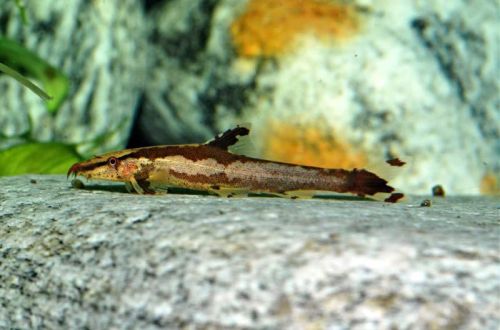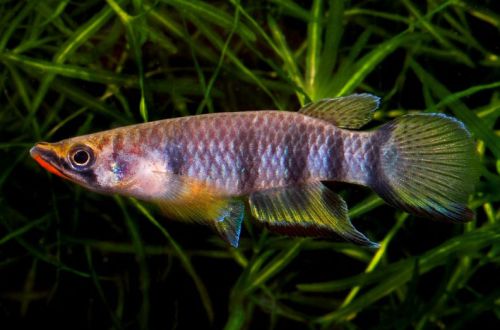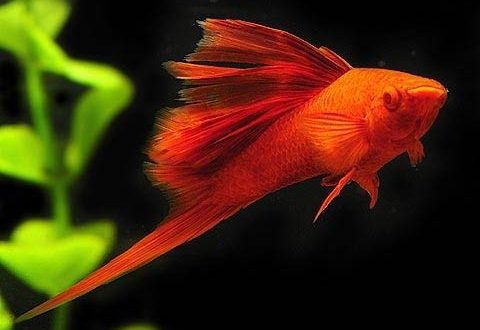
Homaloptera two-banded
Homaloptera bilineata, scientific name Homaloptera bilineata, belongs to the family Balitoridae (river loaches). Easy to keep, accommodating fish, but the difficulties with breeding somewhat limit its availability in the amateur aquarium.

Contents
Habitat
It originates from Southeast Asia from the territory of the eastern provinces of Myanmar (Burma) and northwestern Thailand from the basin of the Thanlain River (synonymous with the Salween), which flows through hilly / mountainous areas. A typical biotope is a fast-flowing, shallow river containing clean running clear water rich in dissolved oxygen. The substrates usually consist of gravel, rocks, boulders with patches of aquatic plants growing mainly along the coast.
Brief information:
- The volume of the aquarium – from 100 liters.
- Temperature – 20-25°C
- Value pH — 6.0–7.5
- Water hardness – soft (1-10 dGH)
- Substrate type — stony
- Lighting – moderate or bright
- Brackish water – no
- Water movement – moderate or strong
- The size of the fish is 9–10 cm.
- Nutrition – sinking and gel-like feeds with herbal supplements
- Temperament – peaceful
- Keeping a group of at least 6 individuals
Description
Adults reach a length of 9–10 cm. The fish has a strongly elongated body and a pointed, elongated head. Near the mouth are three pairs of sensitive short antennae. Paired fins are shifted closer to the lower part of the body, like flippers in aquatic mammals. Thanks to this structure, the fish can stay on the surface of stones, resisting strong currents, and also cling to the leaves and trunks of plants, clasping them with these fins. The coloration is grayish with two pronounced brown stripes of irregular shape running along the back and abdomen. Brown pigmentation is also present on the dorsal fin and tail. Sexual dimorphism is weakly expressed, there are no obvious visible differences between male and female.
Food
In nature, they feed on algae and small invertebrates. In a home aquarium, the diet should also consist of vegetable and protein components. For example, dry sinking flakes, granules in combination with live or frozen brine shrimp, daphnia, bloodworms. Depending on the conditions of detention, the products served may vary. For example, in a strong current, most products will circulate with the water, only polluting it, so in this case, specialized products are needed, such as gel-like or pasty foods, which can be placed directly on the bottom in small portions.
Maintenance and care, arrangement of the aquarium
The optimal size of the aquarium for a group of 6 fish starts from 100 liters. The tank is selected low, a height of 30 cm will be more than enough. When keeping Homalopterus bilane, it is important to provide clean water, rich in dissolved oxygen, in an acceptable range of temperatures and values of hydrochemical parameters. Flow is welcome. A productive internal filter combined with an aeration system is able to solve some of the problems, as well as become a source of strong water movement if excess power is used. Maintaining high water quality depends not only on the filter, but also on a series of regular aquarium maintenance procedures: weekly replacement of part of the water with fresh water and removal of organic waste (food leftovers, excrement).
The format doesn’t really matter. It is enough to place on a layer of gravel, coarse sand and a few snags and stones. When choosing live plants, it is worth giving preference to those varieties that can withstand turbulent conditions, such as anubias, aquatic mosses and ferns.
Behavior and Compatibility
Prefers to be in the company of relatives. It is recommended to purchase a group of at least 6 fish. Compatible with other non-aggressive species of comparable size that can live in a similar environment. For example, other loaches, catfish akisis and others.
Breeding / breeding
At the time of preparation of the materials for this article, the authors failed to find reliable data on the breeding of Homalopterus two-striped in home amateur aquariums.
Fish diseases
Health problems arise only in case of injuries or when kept in unsuitable conditions, which depresses the immune system and, as a result, provokes the occurrence of any disease. In the event of the appearance of the first symptoms, first of all, it is necessary to check the water for the excess of certain indicators or the presence of dangerous concentrations of toxic substances (nitrites, nitrates, ammonium, etc.). If deviations are found, bring all values back to normal and only then proceed with treatment. Read more about symptoms and treatments in the Aquarium Fish Diseases section.





